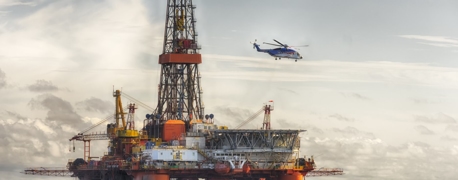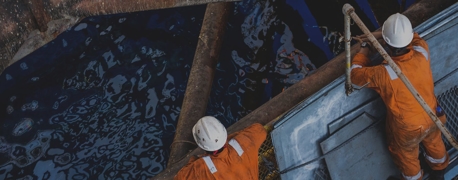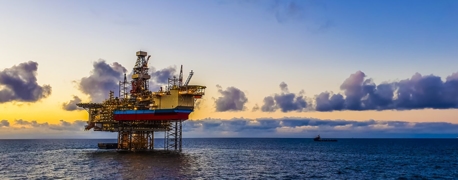Types of Offshore Oil Rigs

In the late 1950s, the oil industry began to push itself out into deeper and deeper waters for oil exploration. As onshore resources started to shrink and competition in the industry continued to grow, oil producers invested in ways to drill in ever-deeper water. At this time, “deep water” was considered to be anything below 60 feet. Technology has come a long way since then. Recently-built drilling vessels can now access oil up to 12,000 feet deep. The Japanese research vessel Chikyu can drill to 23,000 feet below the seabed! As the economy has grown and the nation’s oil use has climbed, technology has had to advance more quickly to meet demand.
Variations in sea level, weather conditions, and a desire for platform mobility has led to the construction of many different types of rigs, including:
Jack-Up Rigs
Jack-up rigs are often used for shallow wells. Standing on three (sometimes four) legs secured to the ocean floor, the oil platform can travel up and down the legs as water levels shift. The “jacking” of the platform up and down is where this technology gets its name. For the first time, jack-up rigs provided a stable platform from which to drill oil offshore. Soon, these rigs appeared all over U.S. coasts.
The first jack-up rig was invented in 1954, but technological advances continued to improve it into the 1980s and 90s. As of 2013, 540 jack-up rigs are still in use offshore all over the world. Today, “premium” jack-up rigs can drill as deeply as 400 feet (which is now considered shallow in today's industry).
Semi-Submersible Platforms
This type of drilling platform is a massive floating vessel. The platform rests on huge columns that are secured to large pontoons. It uses dynamic positioning systems (thrusters) or anchors to stay in place during drilling. The BP Deepwater Horizon was this type of drilling rig.
Among floating rigs, semi-submersibles are considered the most stable. When drilling is being considered for rough waters, oil companies will often use semi-submersibles for their ability to remain stationary in less-than-ideal settings. Contemporary rigs can drill below 3,000 feet—the newest below 10,000.
Drillships
Drillships are now the most in-demand drilling rigs. Of the drilling platforms currently under construction, most of them are drillships. That is because drillships offer a faster alternative to semi-submersibles. While semis take over two months to reach a new site, drillships can make the same trip in 3 weeks.
The advantage offered by drillships is that they can operate in remote locations with fewer supply trips required. Also, their mobility and increased depth capabilities allow owners to charge more per day for use. However, they are less stable than the average semi-submersible.
Compliant Towers
Compliant towers are slender, flexible towers with a concrete pile foundation. This structure is designed to sustain significant lateral forces, and they can operate in water up to 2,990 feet deep.
Condeep Platforms
Condeep platforms include a base of concrete oil storage tanks, with one or more concrete shafts rising upward. The majority of the platform is resting on the seafloor. These platforms are mostly used in the North Sea and Norwegian continental shelf, due to their ability to withstand heavy weather conditions and deep water.
Fixed Platforms
Fixed platforms are directly anchored to the seabed and are thus intended for long-term use. These platforms can operate in a water depth of up to 1,710 feet.
Normally Unmanned Installations
Normally Unmanned Installations (NUIs) are small platforms designed to operate remotely with no crew present.
Spar Platforms
Spar platforms are moored to the seabed with more traditional lines and use counterbalance for stability. They are similar to tension-leg platforms but can be used in more difficult waters due to their increased stability.
Tension-Leg Platforms
Tension-leg platforms are floating platforms tethered to the seabed. They are relatively low-cost and can operate in waters between 590 and 4,270 feet deep, depending on the model.
Contact an Offshore Attorney with Results & Experience
Regardless of the type of rig, all offshore rig workers are protected by the Jones Act. The Jones Act is a federal statute that regulates maritime commerce and provides for maintenance and cure for offshore workers. If you have been injured while working on an offshore platform, you need to speak with an experienced Jones Act lawyer to learn about your legal rights.
Arnold & Itkin protects the rights of injured oil workers, on land or offshore, with aggressive and knowledgeable representation. As a result of our skills, we have managed to secure over $20 billion in verdicts and settlements for our clients. Our firm also represented more Deepwater Horizon crew members than any other firm in the nation. You can trust our experience.
If you were injured on an oil drilling rig, contact our firm. We have the knowledge and experience you need to fight for your right to compensation.
- Categories


